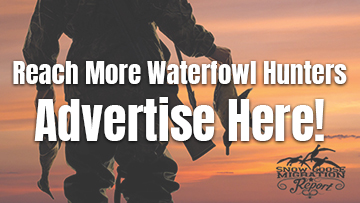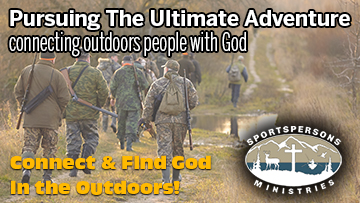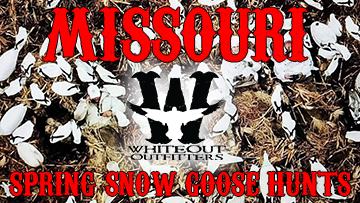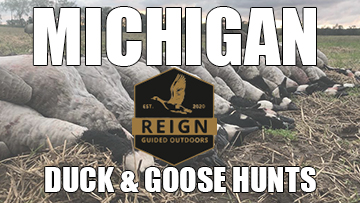Snow Goose Migration Report Frequently Asked Questions
Frequently Asked Questions
Welcome to the Snow Goose Migration Report FAQ page. Below you’ll find answers to the most common questions about using our platform, advertising, and joining our snow goose hunting community.
General Questions
What is Snow Goose Migration Report?
Snow Goose Migration Report is a community-driven platform where hunters, guides, and outdoor enthusiasts share real-time snow goose migration reports, connect with outfitters, find gear, and promote their businesses.
Who can post migration reports?
Anyone! Hunters, bird watchers, photographers, and outdoor enthusiasts can submit migration reports — no registration required for reporting.
Do I need to register to use the website?
Registration is only required for business listings, advertising, and featured product submissions. You can still view and submit migration reports without creating an account.
How do I register for an account?
Visit User Registration, fill out your information, and then log in at Login to access your profile and business listing options.
What exactly is a snow goose and where do they migrate?
Snow geese are medium-sized waterfowl that migrate thousands of miles between their Arctic breeding grounds and southern wintering areas. They follow major flyways such as the Central and Mississippi Flyways, stopping in large staging areas along the way.
When is the best time of year to spot snow geese during migration?
The peak snow goose migration usually occurs in late February through early April in spring, and from October through December in fall. Exact timing depends on weather, snow cover, and temperature shifts that influence their food availability.
What paths or flyways do snow geese typically use?
Snow geese migrate primarily along the Central and Mississippi Flyways, passing through states like Arkansas, Missouri, South Dakota, and North Dakota before reaching Canada and the Arctic tundra to breed.
Why do snow geese gather in such large flocks?
Snow geese form massive flocks as a defense mechanism and to help locate food efficiently. These gatherings, sometimes numbering in the tens of thousands, are among the most impressive wildlife spectacles in North America.
What factors affect the timing and location of snow goose migrations?
Migration timing is heavily influenced by temperature, snow cover, and food sources. When northern fields freeze or snow over, geese move south. In spring, warming temperatures and open water trigger their northward return.
How can I track or receive updates on snow goose migration reports quickly?
You can track snow goose migration in real-time by visiting our Snow Goose Migration Report homepage, where hunters and enthusiasts post live updates from across North America.
What is a snow goose and where do they migrate?
Snow geese are migratory waterfowl that travel between Arctic breeding grounds and southern wintering areas, primarily along the Central and Mississippi Flyways with major staging stops in the Great Plains.
What factors affect the timing and location of snow goose migration?
Temperature, snow cover, and open water drive movement. Sudden cold fronts push birds south; warming trends and open fields pull them north in spring.
How long do snow geese stay in staging areas?
Typically a few days to a couple of weeks, depending on food availability, weather stability, and hunting pressure.
Can migration reports predict when birds will arrive in my region?
Reports can’t guarantee dates, but frequent updates reveal movement patterns and help you anticipate arrivals within a general window.
What are the differences between the Central and Mississippi Flyways for snow geese?
Both hold huge migrations; the Central Flyway sees massive field feeds across the Dakotas and Saskatchewan, while the Mississippi Flyway funnels birds along major river systems and agricultural corridors further east.
How can climate change affect snow goose migration?
Warmer winters and variable springs can shift timing, shorten stopovers, and redistribute staging locations—making real-time reports more important than fixed calendars.
How does the Light Goose Conservation Order impact hunting?
It extends spring opportunities in many areas and often allows tools like electronic calls and unplugged shotguns to help manage overabundant populations. Always check local regulations.
Can I hunt snow geese on public land or only private leases?
Both are possible. Many states offer public access areas, while private leases can provide exclusive, pre-scouted fields. Always verify access rules and required permits.
What conservation rules apply during migration seasons?
Rules vary by state/province and season. Check license, stamp, and weapon requirements, and confirm whether conservation-order provisions (like e-callers) apply where you hunt.
How far in advance should I monitor reports before planning a trip?
Start several weeks out to spot broad trends, then check daily the week before your dates to time peak pushes and staging shifts.
How can I use migration data to plan more effectively?
Watch for consecutive days of sightings moving north or south along your flyway, then align your travel for the next weather window that favors movement.
What travel logistics should I consider for road hunts?
Map backup fields, confirm access and parking, bring extra stakes and batteries, and track fuel, lodging, and local clean stations to save time when birds arrive.
How can I get my business found in AI search agents?
Create a complete listing with consistent name, address, phone, website, clear category tags, and quality images. Keeping your profile active and updated improves discovery across AI and voice assistants.
How do I update my business listing or feature my gear?
Register and log in, then submit updates to your directory listing or add a Featured Product. Our team will review and publish changes—usually within 1–2 business days.
How often should I post or check migration reports?
Check daily during peak weeks. Posting timely sightings helps the community and increases your profile’s visibility to both users and AI-driven search tools.
Advertising & Business Listings
Who can advertise with Snow Goose Migration Report?
Any hunting or outdoor-related business can advertise — including outfitters, guides, gear manufacturers, retailers, and product brands.
What are the advertising options available?
We offer listings for Outfitters & Guides, Gear & Equipment Vendors, Featured Products, and Sponsors. Each listing type gives your business targeted exposure to thousands of snow goose hunters and enthusiasts.
How much does advertising cost?
All listings (Outfitters, Gear, and Featured Products) cost $10 per month. Sponsor-level advertising, which includes premium placement and homepage visibility, is $60 per month.
What’s included in the advertising packages?
Each listing includes a directory placement, banner exposure on featured migration report posts, and inclusion in our 10,000+ follower social media reach. Sponsors receive additional homepage visibility and annual feature highlights.
Do I need to register to advertise?
Yes. All advertisers must register for an account and log in before submitting their business details. This ensures listings can be managed and updated easily.
How quickly does my listing go live?
After submitting your details and confirming payment, listings typically go live within 1–2 business days.
How can I update or cancel my listing?
You can update your business information, images, or links anytime by logging into your account. Listings are billed monthly and can be canceled at any time — no contracts or hidden fees.
Exposure & Audience Reach
How many people see my ads or listings?
Our featured migration report posts consistently receive between 7,000 and 12,000+ views per post, depending on migration activity and season. Combined with our social media audience of over 10,000 followers, your business gains exposure across a highly engaged hunting community.
Where will my business appear?
Your business will appear in multiple high-traffic areas across our website and social media platforms:
- Directory Listing: Found year-round in our searchable online directory.
- Featured Banners: Displayed on migration report posts viewed thousands of times weekly.
- Social Media Posts: Included in featured post shares and gear highlights.
- Homepage Visibility: Sponsor listings receive prime homepage placement and recognition.
Can my business be discovered through AI search?
Yes. Our listings and reports are structured for visibility across AI-driven search tools and voice assistants. Your business can appear when users ask questions like “Find snow goose outfitters near me” or “Where to buy snow goose hunting gear.”
Will my listing appear in search engine results?
Absolutely. Each business listing is indexed by major search engines, helping your company appear in Google, Bing, and AI-enhanced results. Your listing acts as an SEO-boosted backlink to your main website, improving your online authority.
How do social media shares increase my reach?
Every featured migration report and sponsor post is shared across our growing social audience of hunters and bird watchers. These shares often lead to additional reshares, extending your visibility beyond our immediate followers to a much larger organic audience.
How long will my listing stay visible?
Your listing remains active as long as your monthly subscription is current. Posts and features stay live on our site indefinitely, providing long-term search visibility even after seasonal campaigns end.
Can I track how well my listing is performing?
While we don’t provide individual analytics dashboards yet, many advertisers report direct messages, calls, and website clicks as measurable results from their listings. We also monitor engagement trends across listings to improve reach over time.
How quickly will I start seeing exposure?
Listings typically go live within 1–2 business days after setup. Exposure begins immediately once your listing and banner are active — many businesses see traffic and inquiries within the first few days.
Do listings get equal visibility?
All listings are displayed equally in their respective categories. Sponsor-level advertisers receive priority placement on high-traffic pages, homepage features, and in social media mentions.
What makes Snow Goose Migration Report’s audience valuable?
Our audience consists of active snow goose hunters, outfitters, gear manufacturers, and enthusiasts looking for real-time migration data. These are highly targeted, high-intent users already interested in hunting services, trips, and equipment.
Does my ad appear on every migration report?
Yes — featured banners rotate across all major migration report posts, ensuring that your brand appears consistently where the most visitors engage. Sponsors may also receive placement on additional pages and reports.
Can my business be highlighted outside of the directory?
Yes. You can sign up for a sponsorship and get highlighted on our social media as well as additional articles created for your business and or products specifically. From time to time, we feature select businesses in seasonal posts, articles, or social promotions. Maintaining an active listing increases your chances of being selected for additional exposure opportunities.
What makes Snow Goose Migration Report different from other directories?
We’re not just a directory — we’re an active community platform built around real-time snow goose migration updates. Your business isn’t buried in a list; it’s featured alongside timely reports that attract thousands of daily visitors looking for gear, guides, and hunting info. This integration creates immediate relevance and higher-quality engagement.
Featured Products & Vendors
What is a Featured Product listing?
Featured Product listings highlight your newest, most popular, or most relevant hunting gear in our “Featured Products” section. Each listing includes your product image, detailed description, price range, and a direct link to purchase or learn more. These listings help hunters quickly discover trusted gear recommended within our community.
How much does a Featured Product listing cost?
Every Featured Product listing is $10 per month. You can feature one or multiple items, rotate products seasonally, or highlight new gear launches throughout the year. There are no contracts — cancel or update anytime.
Can I include multiple images or product details?
Yes. Each listing can include one main image and several additional product photos, giving customers a clear view of your item. You may also include a detailed description, specifications, available sizes or variations, and your website or store link for purchase.
How are Featured Products displayed on the website?
Featured Products appear in a dedicated section of our website and may also rotate through our homepage and post banners. They are often highlighted within migration reports, which receive 7,000–12,000+ views per post, offering excellent exposure to active hunters.
Can my product listing appear on social media too?
Yes. Featured Products are periodically shared across our 10,000+ social media following, especially when tied to seasonal hunting trends, product launches, or special promotions. This helps drive additional interest and engagement from our outdoor audience.
What types of products are best suited for Featured Listings?
Ideal products include snow goose decoys, blinds, calls, apparel, ammunition, layout gear, and other waterfowl-related equipment. We also feature accessories, tools, and technology that benefit hunters and outdoor enthusiasts.
How do I submit a Featured Product listing?
To list your product, simply register for an account and log in to your vendor dashboard. From there, complete the product submission form with your item details, upload images, and confirm your $10 monthly setup. Our team will review and activate your listing within 1–2 business days.
Can I change or update my product after it’s published?
Absolutely. You can update descriptions, pricing, or images anytime by logging into your account. If you’d like to replace a product entirely, just submit the new information — your listing will be updated in the next rotation cycle.
Do Featured Products show up in search results?
Yes. All product listings are indexed for search engine visibility and AI-driven discovery. When users ask questions like “best snow goose decoys” or “top hunting blinds,” your listing can appear in relevant results based on its description and category.
Can I feature seasonal or limited-time products?
Definitely. Many vendors feature seasonal gear such as cold-weather apparel, spring decoy spreads, or new electronic callers. Limited-time listings can be added for special promotions, clearance sales, or new product launches.
How can I make my Featured Product stand out?
Use clear, high-quality images, a descriptive title, and a compelling summary that explains the product’s benefits. Including a video link, testimonials, or user tips can also increase engagement. Listings tied to migration updates or hunting advice articles tend to attract more clicks.
What makes Featured Products on Snow Goose Migration Report unique?
Our platform combines real-time snow goose migration reporting with a curated gear showcase — meaning your products are seen by users actively preparing for hunts, scouting locations, and comparing equipment. This targeted timing drives meaningful attention to your gear when interest is at its highest.
Is there a limit to how many products I can feature?
No strict limit — you can list as many products as you like. Many vendors rotate new or seasonal items monthly while keeping top sellers visible year-round to maintain steady exposure.
Technical & Support
How do I contact support if I need help?
You can contact our support team through the website’s contact form or reply to your listing confirmation email. We typically respond within 24 hours.
What happens if my payment fails or I miss a renewal?
If payment fails, your listing will be temporarily paused until the issue is resolved. We’ll notify you via email to help you get back up quickly.
Is there any exclusivity or regional restriction?
No. We do not offer exclusivity by category, date, or region. All listings are open to ensure equal exposure for everyone.
Getting Started
How do I start advertising?
Register your account at User Registration, log in, and select the signup form for your category — Outfitters, Gear, Featured Product, or Sponsor.
What information do I need to provide for a listing?
You’ll need your business name, logo or image, description, website link, and contact details. Our team will review your submission and confirm setup before publishing.
When can I expect to see results?
Most advertisers start receiving traffic and inquiries within days of activation. With thousands of daily viewers, your exposure begins as soon as your listing goes live.
Register Now to get started, or visit our Pricing page to view options.
Snow Goose Hunting
What gear do I need to hunt snow geese?
Essential snow goose hunting gear includes a 12-gauge shotgun, non-toxic ammunition, a reliable layout or A-frame blind, white or camouflage clothing, and a decoy spread. Many hunters also use electronic callers and flags to simulate large flocks and motion.
What is the best time of year to hunt snow geese?
The best time to hunt snow geese is during the spring conservation season (late February through early April) and the fall migration (October through December). Timing depends on the weather and where the geese are along the flyway.
Where are the best places to hunt snow geese?
Prime snow goose hunting locations include the Central and Mississippi Flyways — especially in Arkansas, Missouri, South Dakota, North Dakota, and Saskatchewan. These regions see massive flocks during migration peaks.
How many decoys should I use for snow goose hunting?
Large decoy spreads work best for snow geese since they migrate in massive flocks. Most hunters deploy 500–1,000 decoys, but even 200–300 can be effective when placed realistically with a mix of full-body, windsock, and flyer decoys.
Do electronic callers really help?
Yes. Electronic callers are legal during the conservation season and can dramatically increase success rates by replicating the sound of large, feeding flocks. Position multiple speakers throughout your decoy spread for the most natural effect.
Should I hunt snow geese in fields or over water?
Most snow goose hunts take place in harvested crop fields, where geese feed during migration. However, water hunts can be productive early in the season or during warmer weather. Field hunting usually provides more consistent shooting opportunities.
What type of ammunition is best for snow geese?
Use non-toxic shot such as steel, bismuth, or tungsten in sizes BB to #2 for best results. A 12-gauge shotgun with a modified or full choke provides ideal range and power for the large, tough birds.
How important is weather when hunting snow geese?
Weather plays a major role in snow goose behavior. Overcast or windy days tend to make birds fly lower and decoy better. Sudden cold fronts and strong north winds often push new flocks into hunting areas.
Can I hunt snow geese without a guide?
Yes, but hiring a guide or outfitter can significantly improve your success rate — especially if you’re new to snow goose hunting. Outfitters provide access to prime fields, decoy setups, and expert calling that’s hard to replicate on your own.
Is snow goose hunting good for conservation?
Absolutely. The spring conservation order was created to help control overpopulation of snow geese, which can damage fragile Arctic breeding habitats. Ethical hunting helps maintain balanced ecosystems and supports wildlife management efforts.
What are the best decoy spread designs for large flocks?
Use big, wind-friendly spreads mixing full-bodies, windsocks, and motion. Leave landing pockets upwind and vary density to mimic relaxed feeders and new arrivals.
How many decoys do I really need?
More helps, but realism matters most. Effective spreads can start around a few hundred and scale up. Match your spread to field size, wind, and recent bird behavior.
Do motion decoys and electronic callers increase success?
Yes—especially in the conservation season. Motion and strong, multi-speaker e-caller sound help simulate feeding frenzies that pull distant flocks.
What ammo and choke work best in windy conditions?
Non-toxic BB–#2 through a modified or full choke is common. In wind, lean toward larger shot and tighter patterns to maintain energy and penetration at range.
What gear innovations are changing snow goose hunting?
Lighter windsock systems, stronger portable e-callers, panel blinds with better concealment, and high-performance non-toxic loads all improve efficiency in the field.
What mistakes do beginners make, and how do I avoid them?
Common issues include poor concealment, bad wind setup, and static spreads. Brush blinds thoroughly, set with the wind in mind, add motion, and stay adaptable based on fresh scouting.
Outfitters & Guides
What should I expect when booking a guided snow goose hunt?
Most guided snow goose hunts include access to prime private land, decoy spreads, blinds, and professional calling. Some outfitters also provide lodging, meals, and bird cleaning. Expect early mornings, changing weather, and fast-paced shooting when the birds are flying.
How do I choose a reputable snow goose outfitter or guide?
Look for outfitters with solid reviews, experience in your target region, and transparent pricing. Check references, ask about guide-to-hunter ratios, and make sure they operate on fresh scouting information for consistent success.
What’s typically included in a guided hunt package?
A standard guided hunt usually includes access to pre-scouted fields, decoy setup, blinds, calling services, and on-site guidance. Lodging, meals, and bird processing may be offered as add-ons or premium options depending on the outfitter.
Do outfitters provide the hunting gear and ammunition?
Most outfitters provide blinds, decoys, and electronic callers, but hunters are usually expected to bring their own firearms, ammunition, and licenses. Always check with your outfitter before arrival to confirm what’s included.
How many hunters are usually in a group?
Typical snow goose hunts include 4–8 hunters per group, though some outfitters can accommodate larger parties. Smaller groups often mean more shooting opportunities and a more personal experience with your guide.
How far in advance should I book a guided snow goose hunt?
It’s best to book your guided hunt at least 3–6 months in advance, especially for popular peak migration weeks in March and early April. Many outfitters fill up quickly once migration patterns stabilize each season.
What’s the success rate for guided snow goose hunts?
Success varies depending on weather, scouting, and migration timing. Professional guides typically scout daily and move clients to the best fields, which significantly increases your chances of seeing and shooting large flocks.
Do outfitters clean or process the birds?
Many outfitters offer bird cleaning or processing services for a small additional fee. If not, they’ll usually provide facilities or recommend local options. Always ask ahead of time so you can plan accordingly.
Are guided snow goose hunts safe for beginners?
Yes! Most guides welcome beginners and provide clear safety instructions before the hunt. They handle field setup, calling, and bird identification so that new hunters can focus on shooting safely and enjoying the experience.
What should I bring for a guided snow goose hunt?
Bring your shotgun, ammunition, state and federal waterfowl licenses, warm waterproof clothing, gloves, and a face mask. Don’t forget snacks, a camera, and a positive attitude — snow goose hunts are fast-paced and exciting!
How can I find snow goose outfitters near me?
Use our Outfitters & Guides Directory to find trusted snow goose guides by region. Each listing includes contact information, services offered, and links to book your hunt.
How does hiring an outfitter improve results?
Guides scout daily, secure prime private fields, set massive spreads, and manage calling—eliminating trial-and-error so you hunt where birds want to be.
What should I ask a guide before booking?
Ask about scouting practices, hunter-to-guide ratios, average decoy spread size, typical success during your dates, and deposit/cancellation policies.
What are typical costs and inclusions?
Rates vary by region and package. Most hunts include access, decoys, blinds, and calling. Lodging/meals and bird processing may be add-ons—confirm details up front.
Join the Snow Goose Migration Report — The Hub for Outfitters, Guides, Sponsors & Hunting Gear
Ready to Reach Thousands of Snow-Goose Hunters & Industry Partners?
Join our community today — whether you’re an outfitter, gear vendor, brand sponsor, or affiliate — and get featured, get exposure, and grow your bookings this season.








